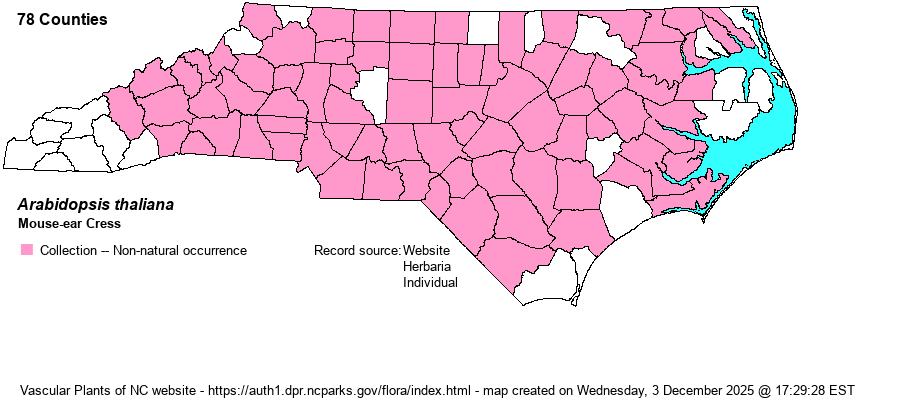| Author | (L.) Heynhold | |
| Distribution | Throughout the state; perhaps in every county.
Native of Europe and western Asia; in N.A. most of the U.S. and southern Canada, except not in the Midwestern prairies and plains nor the arid Southwest. | |
| Abundance | Generally common to very common; uncommon on the Outer Banks, and rare in the southwestern Mountains. | |
| Habitat | Roadsides, lawn weed, campus weed, vacant lots, garden weed, nursery weed, waste ground, disturbed soils. | |
| Phenology | Flowering and fruiting February - mid-May. | |
| Identification | Mouse-ear Cress is readily seen in early to mid-spring. Flowers appear almost as soon as the plants break through the ground and continue as the stem grows 6 inches to 1 foot tall. The basal leaves are obovate or elliptic, taper to the stem, and generally lie on the ground. The stem leaves are essentially sessile, narrowly elliptical to linear. The flowers are small and white; the pods linear, round in cross-section. | |
| Taxonomic Comments | | |
| Other Common Name(s) | | |
| State Rank | SE | |
| Global Rank | GNR | |
| State Status | | |
| US Status | | |
| USACE-agcp | | |
| USACE-emp | | |

